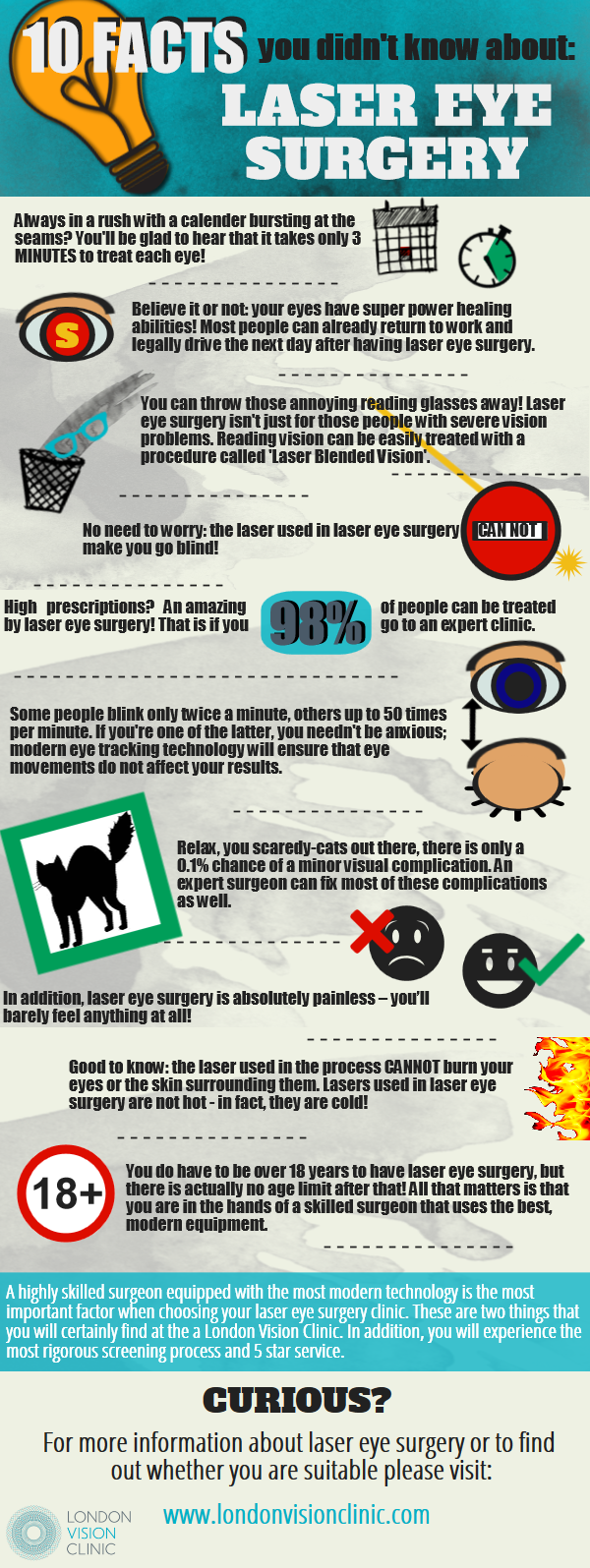Understanding The Various Types Of Intraocular Lenses For Cataract Surgical Treatment

Article created by-Steensen Melvin
Throughout cataract surgical treatment, your natural lens is eliminated and replaced with an artificial lens. Your cosmetic surgeon will discuss with you the various sorts of IOLs readily available to lower or remove your need for glasses after surgery.
Standard IOLs have one focusing distance and are normally set for clear range vision. Premium IOLs, additionally called multifocal or accommodative lenses, have zones with various concentrating staminas to allow you to see near and far things without glasses.
Monofocal IOLs
Requirement monofocal lenses are used most regularly to fix cataracts during a procedure called refractive lens exchange (additionally referred to as clear lens exchange). The cataractous natural lens is replaced with an artificial one, resulting in boosted vision.
These IOLs supply clear vision at a solitary distance. They are normally set to optimize your distance vision, however you will certainly still require reviewing glasses for close to objects.
Read Homepage are made from an acrylic product that is adaptable as well as collapsible. This permits your ophthalmologist to put them right into the same laceration whereby your all-natural lens was eliminated throughout surgical procedure. Your eye doctor can review your IOL options with you as well as recommend the best course of action for your visual requirements.
Multifocal IOLs
These superior lenses offer a series of emphasis areas, removing the demand for glasses to see up close, far away or in between. This is achieved via several especially made concentrating powers or by suiting (altering form) the lens. It may take a while for your mind to adapt to these lenses, but the vision they provide is well worth the effort!
These lenses are split right into 2 main classifications based on just how they flex light to develop numerous retinal pictures. They can be classified as refractive multifocal and diffractive multifocal lenses.
Distance Vision possess multiple curvatures to form "refractive areas" that bend light to generate multiple retinal pictures with various dioptric powers. This allows for a greater degree of picture quality without being dependent on the dimension of the student. Examples include the Tecnis Multifocal and also Panoptix.
Toric IOLs
In individuals with astigmatism, the curve of the cornea is slightly imperfect, so light getting in the eye is not focused in one place on the retina. This causes fuzzy vision. During cataract surgical procedure, toric IOLs are lined up so the lens's steepest section matches this contour as well as produces clear, sharp vision.
Toric IOLs are an excellent option for people that need cataract surgery and also intend to decrease their reliance on glasses or get in touch with lenses. Nevertheless, a toric IOL requires to be perfectly lined up for optimum visual results. For each 3 levels of misalignment, the IOL is 10% less effective.
To reduce the threat of postoperative IOL rotation, the ophthalmic viscoelastic device (OVD) should be thoroughly removed from the capsular bag before IOL insertion. Throughout this action, the surgeon needs to very carefully note the steepest point of the cornea to assist direct the IOL's axis after it is implanted. This assists avoid the individual from needing to undergo surgery once again to have the IOL re-aligned.
Prolonged Deepness of Emphasis (EDOF) IOLs
A brand-new technology has actually recently emerged in the treatment of presbyopia called Extended Deepness of Focus (EDOF). These lenses make use of a solitary lengthened centerpiece to improve range of vision. The resulting lenses do not have the numerous points of focus of multifocal IOLs, which can cause halos and glow for some patients.
A perfect EDOF lens would provide a sharp emphasis over an array from plano to -1.50 D, allowing patients to see near, intermediate, and also range things without glasses. Lens Replacement Surgery For Short Sight to be presented was the diffractive layout of the Tecnis Symfony IOL, which utilizes light-splitting rings to expand the range of vision. Nevertheless, this design can trigger a reduction on the other hand sensitivity that many individuals do not endure well.
A more recent non-diffractive EDOF IOL is the Vivity IOL, which combines aspheric optics with a pinhole layout to boost depth of emphasis. This design minimizes caused aberrations and may result in better comparison level of sensitivity, though it does not totally appropriate for astigmatism or allow for practical near vision.

